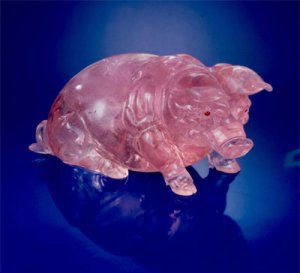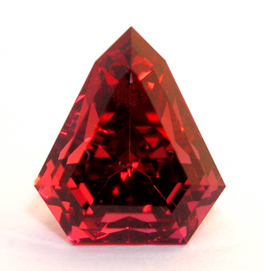Ninama
Brilliant_Rock
- Joined
- Jul 30, 2007
- Messages
- 1,289
This is the Largest carved or faceted Pink Emerald in the World, carved in 1991 by the Master European gemstone carver, Manfred Wild of Idar-Oberstein, Germany. This 5325 Carat Porcine (Pig) has faceted Red Ruby eyes and was carved from a large piece of Pink Emerald rough from Brazil. "Pinky", as he is affectionately known by the Press throughout the world, has appeared on the cover of many magazines and numerous articles have been written about this record setting world famous Pink Emerald. Pinky is currently celebrating the good luck and good fortune of Chinese New Year during 2007 which is the Year of the Pig.
Gemstone Type: Natural Pink Emerald
Reference#: ODA112
Weight: 5325 Carats
Size: 10 inches x 3.8 Inches
Price Per Carat: $ N/A
Shape & Cut: Carving
Color: Pink
Tone: Rich
Country of Origin: Brazil/Germany
Clarity: Opaque
Enhancement Code: N
Retail Price: $2,750,000 USD
Your Price: $2,500,000 USD

Gemstone Type: Natural Pink Emerald
Reference#: ODA112
Weight: 5325 Carats
Size: 10 inches x 3.8 Inches
Price Per Carat: $ N/A
Shape & Cut: Carving
Color: Pink
Tone: Rich
Country of Origin: Brazil/Germany
Clarity: Opaque
Enhancement Code: N
Retail Price: $2,750,000 USD
Your Price: $2,500,000 USD













300x240.png)